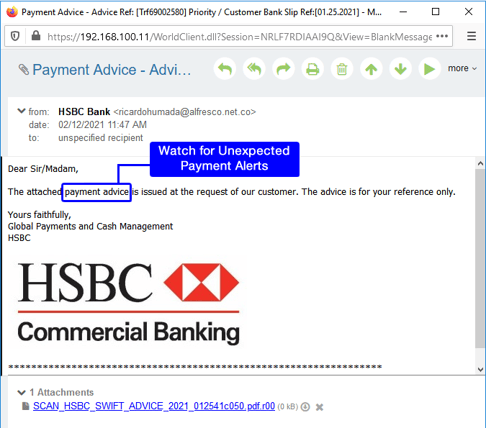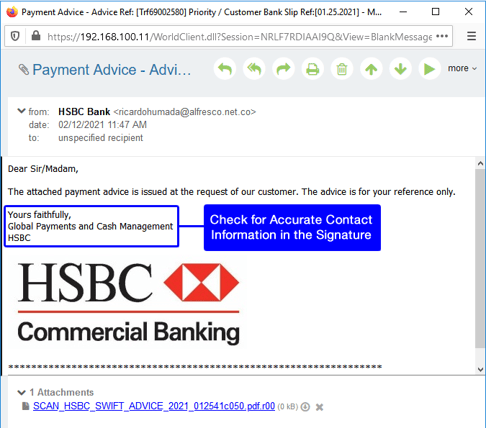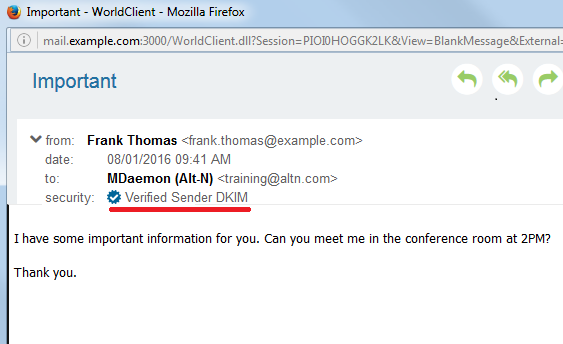Don’t Risk Losing your Life Savings to Scammers. Follow these 10 Tips to Identify a Phishing Email.

Whether you run a Fortune-500 organization or a small boutique, by now you should be aware of the threats posed by cyber criminals to trick you into clicking a link, downloading an attachment, or parting ways with your money.
Modern day email scams are getting more sophisticated, leading to staggering losses for businesses of all sizes. According to the 2024 Verizon Data Breach Investigations Report, phishing was used in over 90% of all reported breaches.
While these figures are staggering, they continue to rise as scammers reap huge payouts from BEC (Business Email Compromise), CEO fraud and other phishing scams.
The real estate industry is a prime target for phishing because large sums of money change hands and there are various weak links in the transaction process. If any step within the transaction process becomes compromised with a successful phishing email, the attacker could gain access to a legitimate email address from which to launch other attacks. The fraudster could then lie in wait, scanning email messages for financial or transaction related details, and then send off fraudulent wire transfer instructions to an unsuspecting buyer, seller, or agent. For example, this happened to a 31 year-old first-time home buyer in San Antonio, Texas. She felt that she was in a time crunch to send in her down payment and finalize other closing tasks, and felt that the title company was dragging its feet. This state of high anxiety made her a prime target for a phishing email she received stating that she had previously been given the wrong wire transfer information, and that she needed to wire her down payment to a new account. With 5 hours left to get everything done, she attempted to contact her title company to confirm the change, but no one responded, so in a panic, she hastily ran to the bank and wire transferred her $52,000 down payment. Unfortunately, she sent her life savings to scammers.
The phishing industry is so lucrative for scammers because the barriers to entry are low relative to potential huge payouts. With the rapid spread of AI tools, botnets-for-hire and Malware as a Service (Maas), spammers have an impressive arsenal of tools at their disposal to propagate their campaigns, so to fight this scourge, an educated user is the best defense against phishing scams. With this in mind, here are my top 10 tips on how to identify and protect yourself from phishing attacks.
- Watch out for messages disguised as something expected, like a shipment or payment notification. These often contain links to malware sites. Hover your mouse over any links to make sure they’re safe. Think before you click! Here’s an example using a phishing email I received claiming to come from HSBC.
 Watch for unexpected payment or shipment notices
Watch for unexpected payment or shipment notices -
Watch for messages asking for personal information such as account numbers, Social Security numbers, and other personal information. Legitimate companies will never ask for this over email.
-
Beware of urgent or threatening messages claiming that your account has been suspended and prompting you to click on a link to unlock your account.
-
Check for poor grammar or spelling errors. While legitimate companies are very strict about emails they send out, Phishing emails often contain poor spelling or grammar.
-
Hover before you click! Phishing emails often contain links to malware sites. Don’t trust the URL you see! Always hover your mouse over the link to view its real destination. If the link claims to point to a known, reputable site, it’s always safer to manually type the URL into your browser’s address bar.
-
Check the Greeting – Is the message addressed to a generic recipient, such as “Valued customer” or “Sir/Madam?” If so, be careful & think twice! Legitimate businesses will often use your real first and last name. In our HSBC example, notice the generic greeting.
 Watch for generic greetings in email messages
Watch for generic greetings in email messages - Check the Signature – In addition to the greeting, phishing emails often leave out important information in the signature. Legitimate businesses will always have accurate contact details in their signature, so if a message’s signature looks incomplete or inaccurate, chances are it’s spam. In our HSBC example, the sender’s name and contact information are missing from the signature.
 Watch for generic signatures in phishing email messages.
Watch for generic signatures in phishing email messages. -
Don’t download Attachments – With the proliferation of Ransomware as a Service (Raas), spammers have an easy mechanism for distributing malware-laden spam messages to thousands of users. And because the payout for ransomware can be quite high, even one successful ransomware infection could net the spammer large amounts of money. If there’s ANY doubt about the identity of the message sender or the contents of an attachment, play it safe and don’t download the attachment.
-
Don’t trust the From address – Many phishing emails will have a forged sender address. The From address is displayed in two places. The Envelope From is used by mail servers to generate NDR messages, while the Header From is used by the email client to display information in the From field. Both of these headers can be spoofed. MDaemon Webmail has built-in security features such as From Header Screening to help users identify spoofed emails. Many mail clients hide the From address, only showing the From name, which can be easily spoofed. In MDaemon Webmail, the From address is always displayed, giving users a clearer view into the source of the email and helping them identify spoofed senders.
 MDaemon Webmail - DKIM-Verified Sender
MDaemon Webmail - DKIM-Verified Sender -
Don’t Enable Macros – And while we’re on the subject of ransomware, another common vector for ransomware infections is through macros in Microsoft Word documents. These documents often arrive in phishing emails claiming to have important content from HR, Finance, or another important department, and to trick the user, they request the user to enable macros. Never trust an email that asks you to enable macros before downloading a Word document.
While anti-spam and anti-malware tools are quite effective at filtering out the majority of scams, there’s really no substitute for good old-fashioned user education. Know the potential costs to your business and don’t become the next victim!


